There’s something about cherry pie made with fresh cherries… sweet and slightly tart, juicy and bright! Cherries are in season right now… the perfect time for fresh Cherry Pie!!! My only problem with making cherry pie at home from scratch – is the time it takes to pit the cherries. What a chore (and a mess)! Last time I made cherry pie, it took an hour to remove the pits from the cherries, and at the end of it, my hands, fingernails, and clothes were stained red from the cherry juice. :( To remove cherry pits, I have tried everything:
- A straw to push the pits from one end of the cherry out the other (the straw kept bending and breaking… ugh.)
- A metal decorating tip to push the cherry pits out (I bent my nice metal tip out of shape… grrr! And it still was messy and took forever!)
- A paring knife to cut the cherry in half and scoop out the pit with the tip (I cut myself a couple times… and poked myself with the knife!)
Why do the pits have to be so hard to remove!!?!!*??? I found something new, though, that solved my problem… the Tovolo Cherry Pitter (about $22 online). This handy device will pit 7 cherries for you at a time, with a special splatter guard/shield that prevents the juices from flying up at you and staining your clothing. Yes, it is sort of a uni-tasker… but I figured… it can also be used to pit olives (and I eat olives ALL the time)… and it makes it so EASY to pit cherries that I think it’s kind of a useful and handy gadget to have in the kitchen. It’s not too big, so it doesn’t take up that much space. I highly recommend it if you are a fan of baking or cooking with fresh cherries. If you are interested in seeing how this device works, please see my photos below. If you can’t find one of these cherry pitters devices, and don’t mind the time – you can also just remove the cherry pits one at a time with a sharp paring knife (instructions also below)… just be careful not to cut yourself, and wear gloves to protect your hands from staining red.
For the crust, you will have the best tasting cherry pie if you make your crust from scratch. You can either use my pate sucree recipe, or my more rustic pie crust recipe if you like. (Or if you have your own favorite pie crust recipe – use that – just make sure you have enough dough for a top and bottom crust.) You can also use a refrigerated pie crust from the store. Happy cherry season!
P.S. You can pit and freeze fresh cherries during cherry season – just store them in a gallon sized Ziplock freezer bag (with all the air squeezed out)… and then you can have a nice bright cherry pie in the dead of winter as a special treat!
***UPDATE 5/28/15: I’ve had a couple of emails telling me that sometimes this pie recipe can turn out “soupy”. (Fresh cherries can vary greatly in water content, so I can see why this can happen.) I was reading an America’s Test Kitchen article which recommended using 1 peeled and grated Granny Smith apple to prevent watery berry pies… problem solved! (No, you can’t taste the apple or even tell that it’s there!) The pectin from the apple helps to make the juices from the cherries more solid instead of watery.***
Cherry Pie:
- pie crust (top and bottom)
- 5-6 c. fresh sweet cherries
- 1 – 1 1/2c. sugar
- 1 tsp. salt
- 1 tsp. almond extract
- 4 T. tapioca starch
- 2 T. brown sugar
- 4 T. unsalted butter
- 1 T. corn syrup + 1 T. water
- 1 Granny Smith apple, peeled & grated***
- large crystal decorating sugar
1. Rinse your cherries and drain. You will need to remove the pits from the cherries. (See step #5 below if you are using a knife to remove cherry pits.) If you have a Tovolo Cherry Pitter, remove the top lid (plastic guard + red plunger). Place the cherries in the depressions, stem side up.
2. Place the clear plastic lid back onto the device (line up the grooves when you fit the plastic lid back on). Then, place the red plunger into the holes of the clear plastic lid, so that the “rods” are sitting on top of each cherry.
3. Firmly press the red plunger straight down to push the pits out of the cherries. (You might want to use both hands – I did it with one hand because I was trying to take a picture at the same time with my other hand… and it worked… but it’s much easier with two hands.)
4. Remove the clear plastic lid, and voila! You just pitted 7 cherries with no mess, in the time it normally takes to get the pit out of 1 cherry with the old-fashioned knife method! (The pits will collect into the bottom of the device. You see the flat red plastic circle on the bottom of the white cylinder? That’s kind of like a tupperware lid. You just gently pull it off and dump the pits out if it gets too full.)
5. If you have a tried and true method for removing cherry pits… then use the method that works best for you. If you don’t have any cherry pitting devices or know any special cherry pitting tricks, you can just use a sharp paring knife. It can be messy work (use food safe plastic gloves to avoid staining your fingers and the cuticles around your nails): slice the cherry in half until reaching the pit (leaving the bottom intact), then scrape the pit out of the cherry with the tip of a knife.
6. Taste the cherries. If they are quite sweet, then mix the cherries with 1 c. sugar only. If the cherries are not very sweet, you may want to add an additional 1/2 c. of sugar. Allow the cherries to macerate in the sugar for about 30 minutes to 1 hour.
7. Preheat the oven to 350 degrees. Combine the cherries with the salt, almond extract, peeled & grated apple, and tapioca starch.
8. Line the bottom of a 9″ deep dish pie pan with pastry for your bottom crust. Make sure that the crust overlaps the lip of the pie pan slightly. (You can use a package of refrigerated pie crust, or if you prefer to make homemade pie crust try my pate sucree recipe - that recipe will yield enough dough for a top and bottom crust.)
9. Sprinkle the brown sugar evenly across the bottom crust.
10. Pour the cherry mixture into the crust and pat down until even. Cut the butter into small pieces, and dot the top of the cherries.
11. Add the top crust, and press the edges of the top and bottom crust together to seal.
12. Using the thumb and index finger of one hand, pinch one spot on the edge of the pie crust against a knuckle of your other hand to make a pleat. Continue doing this around the circumference of the pie is fluted.
13. Mix 1 T. corn syrup with 1 T. water, and lightly brush this mixture across the top pie crust.
14. Sprinkle the top with large crystal decorating sugar. Cut several slits in the top crust with a knife.
15. Bake for 30 minutes at 350 degrees. Then, check the pie. If the edges are browned, you may want to cover the edges with foil – or use a silicone pie crust shield. Then continue baking for another 30 minutes.
16. Allow to cool at room temperature for several hours until the filling is solid. If you cut into the pie too soon (while it is still warm), the juices will still be liquid, and the pie will be too runny.

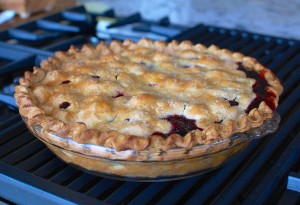
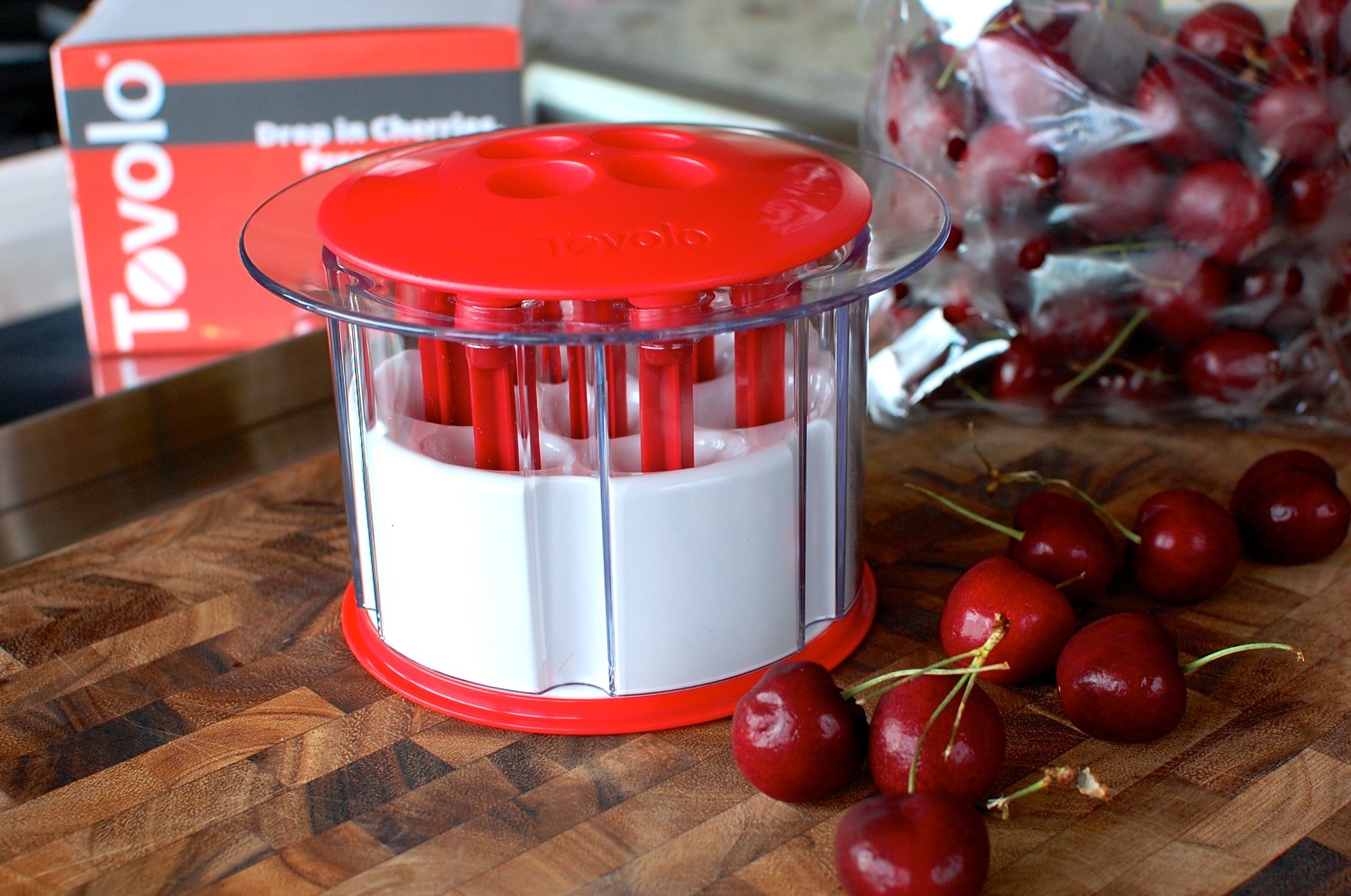
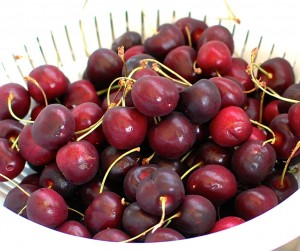
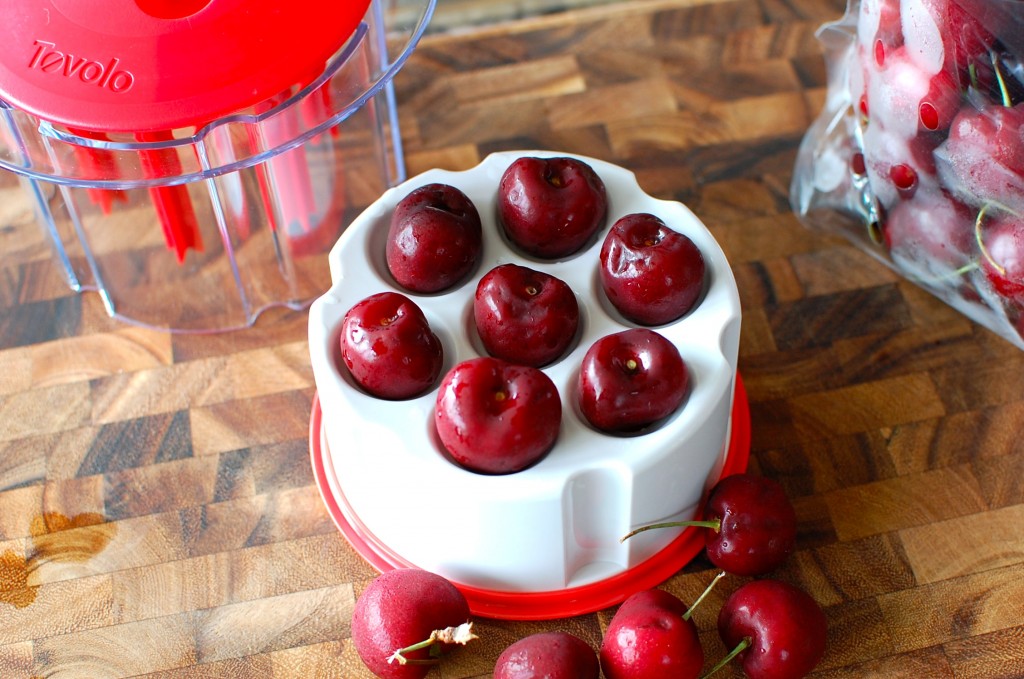
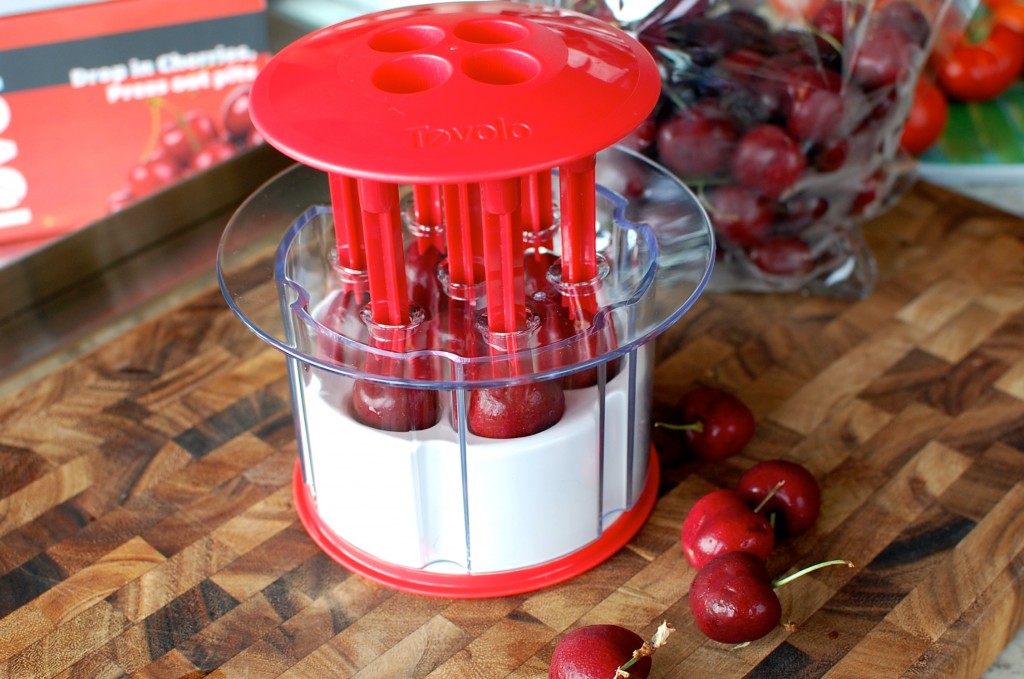
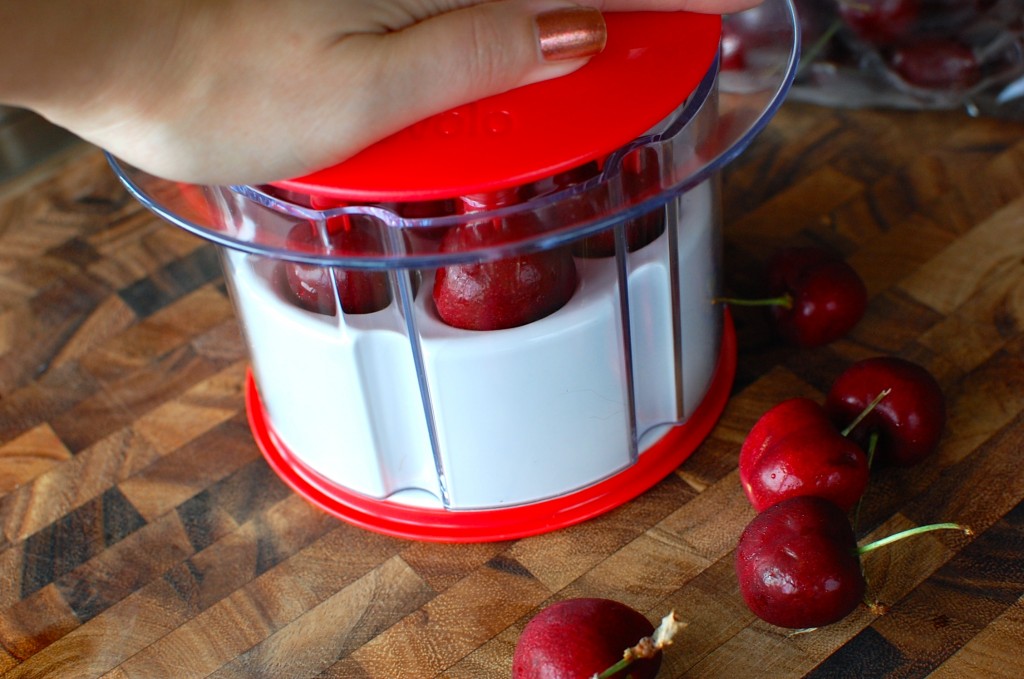
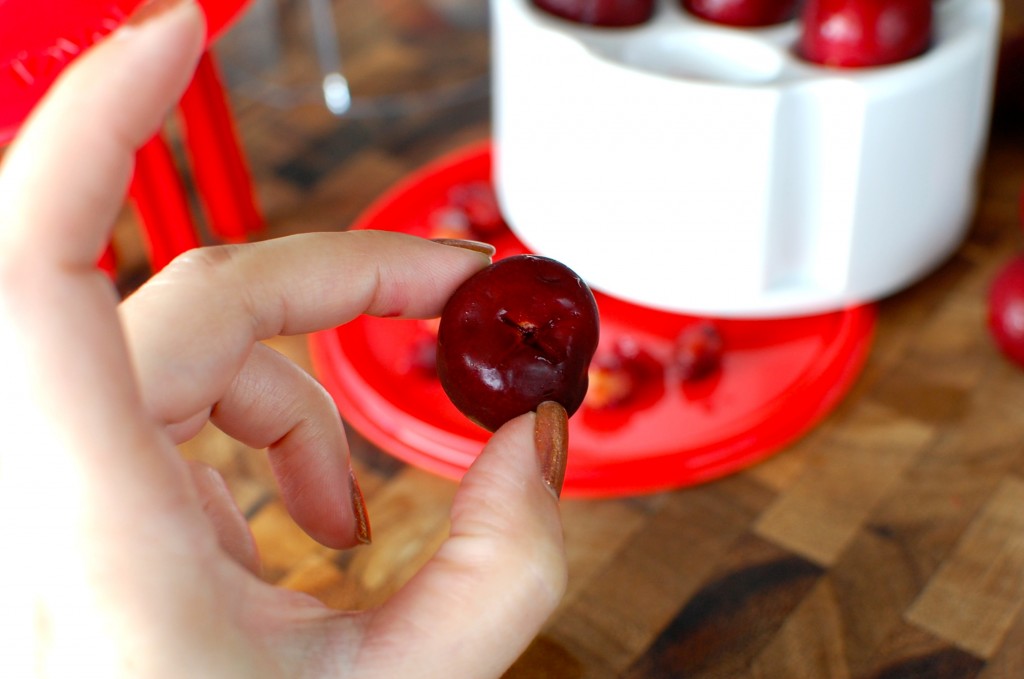
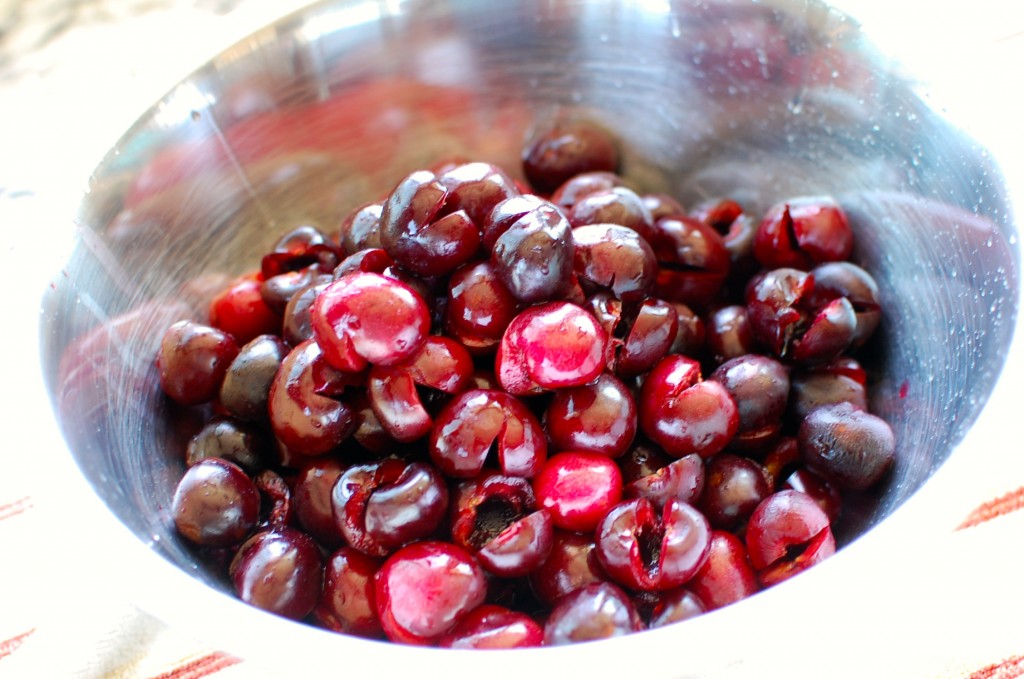
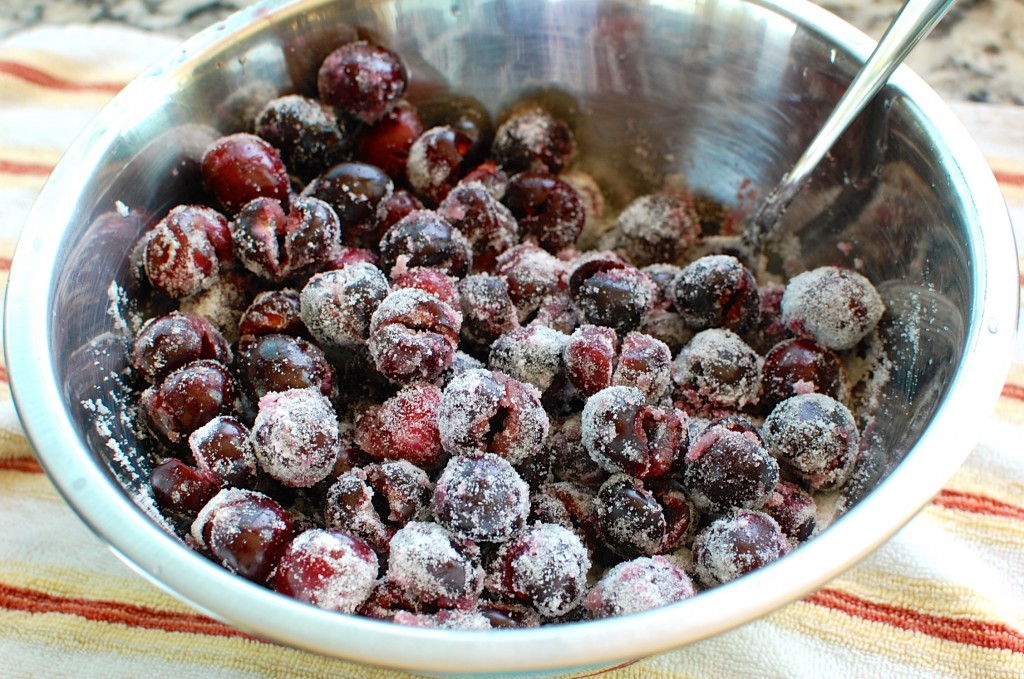
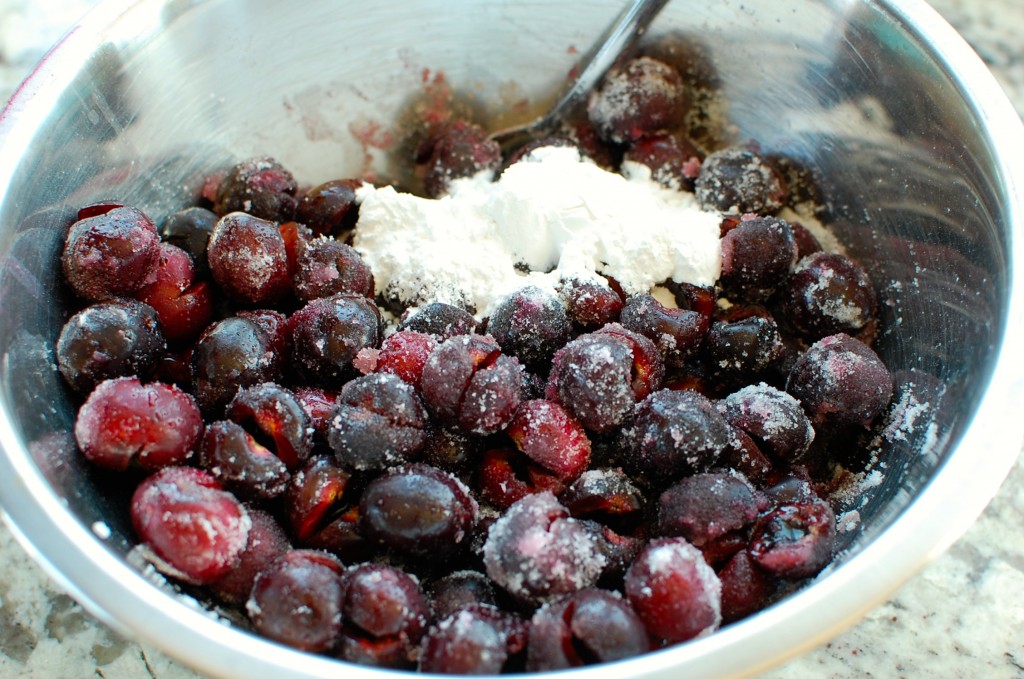
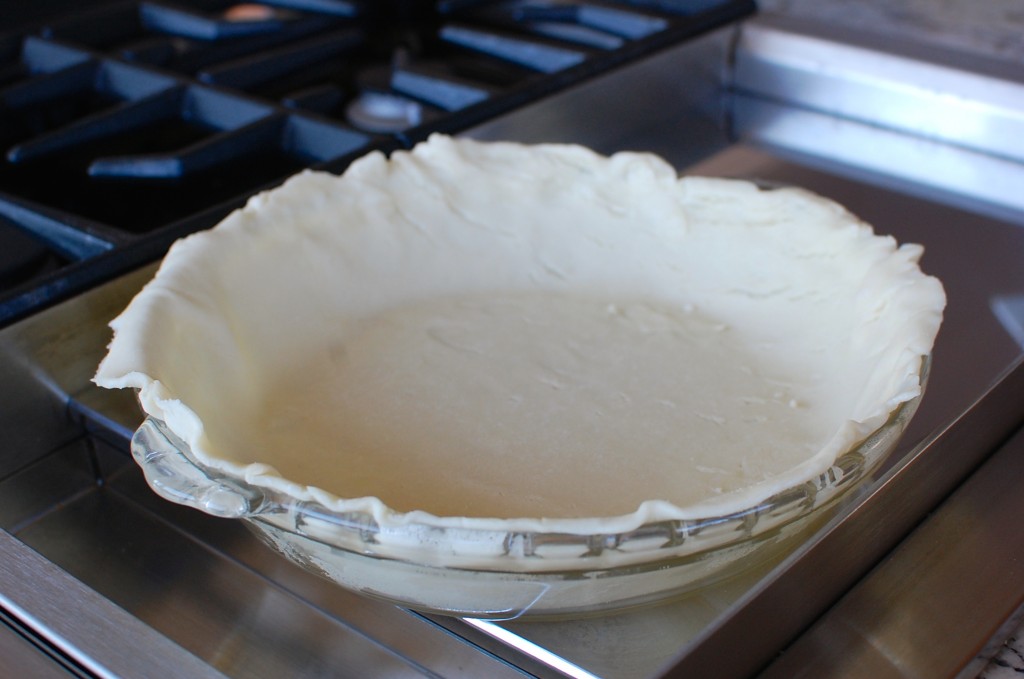
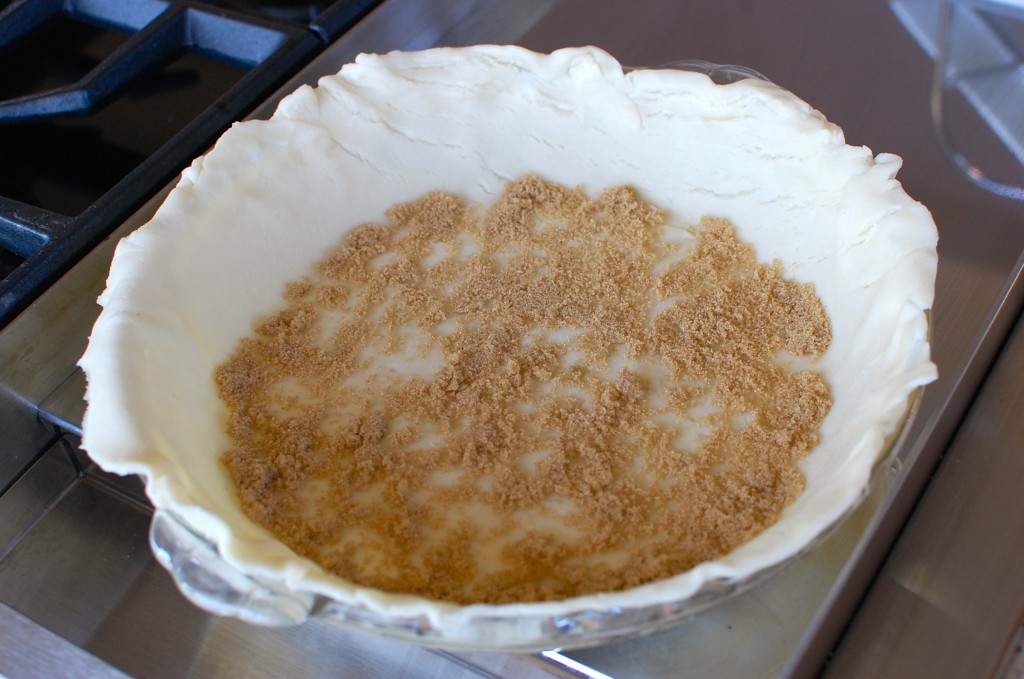
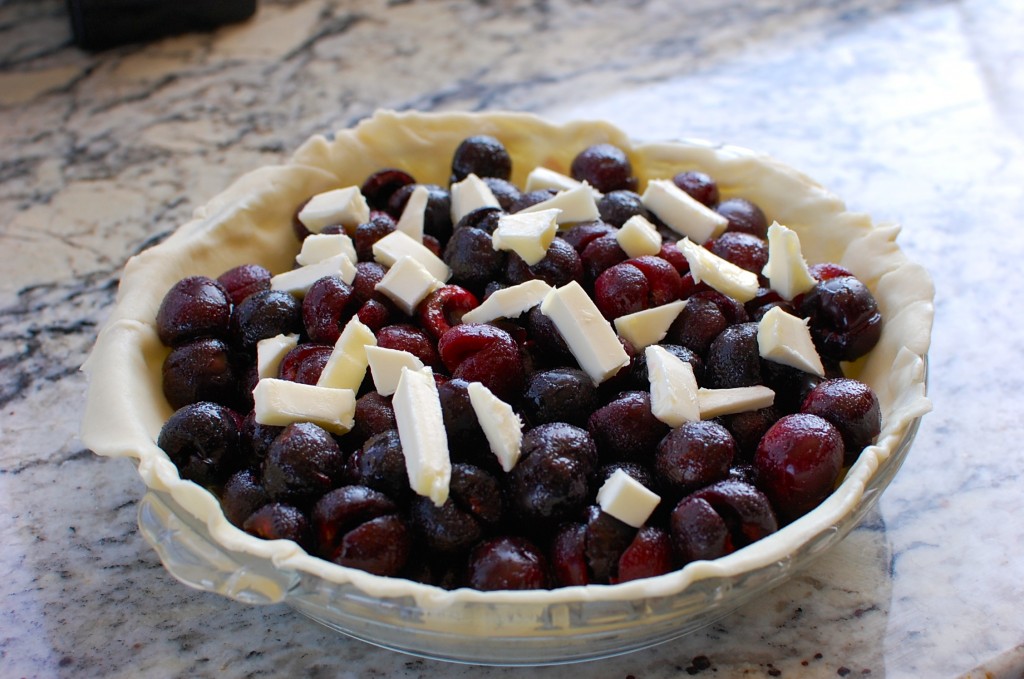
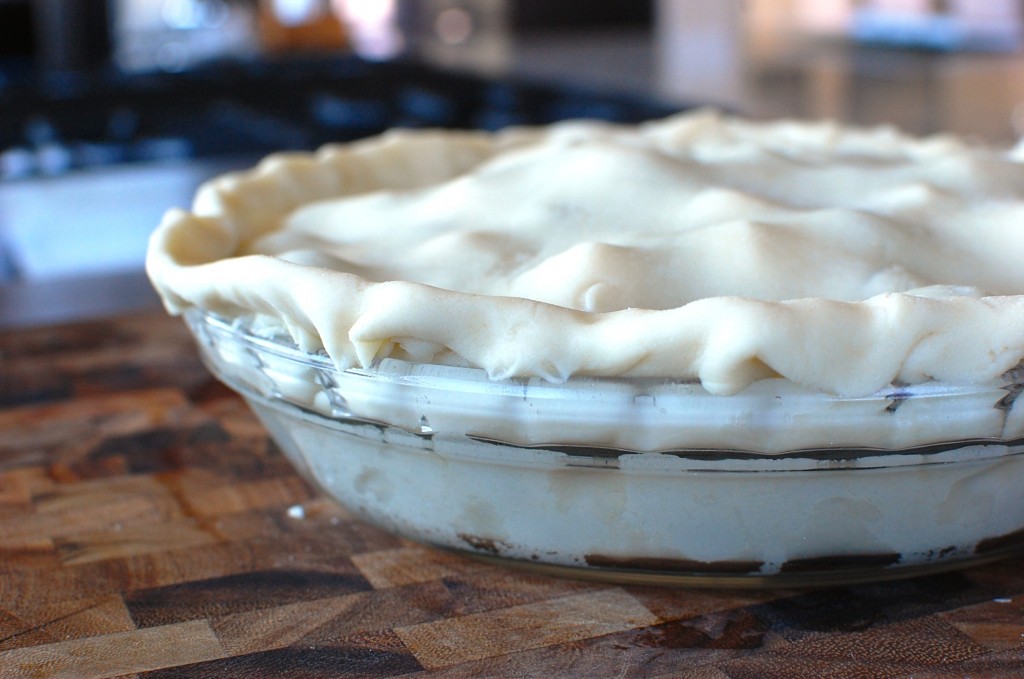
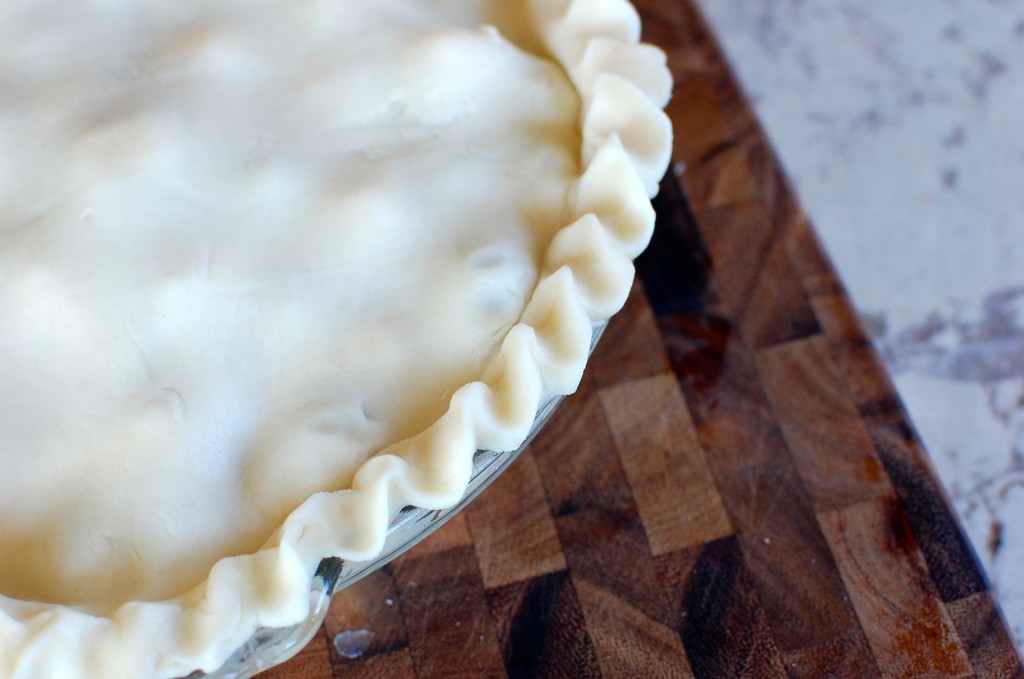
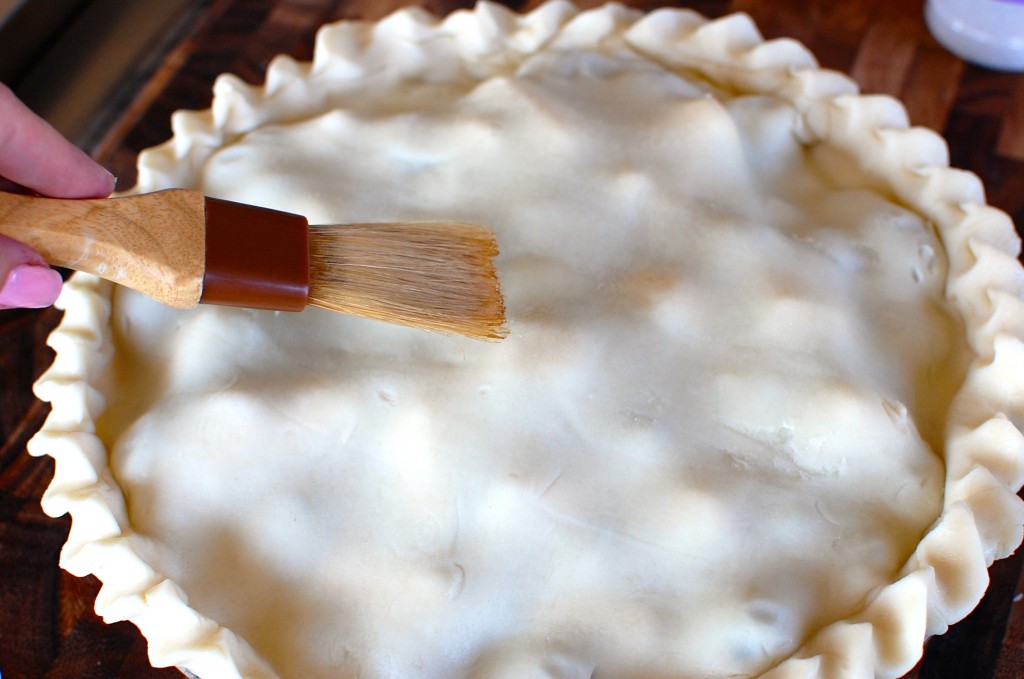
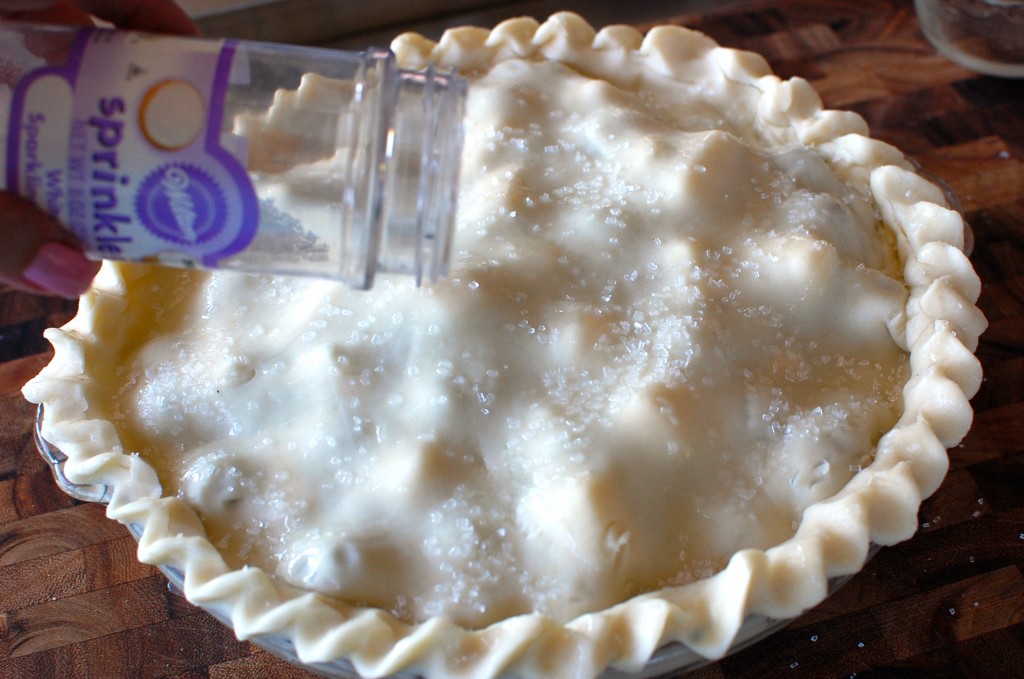
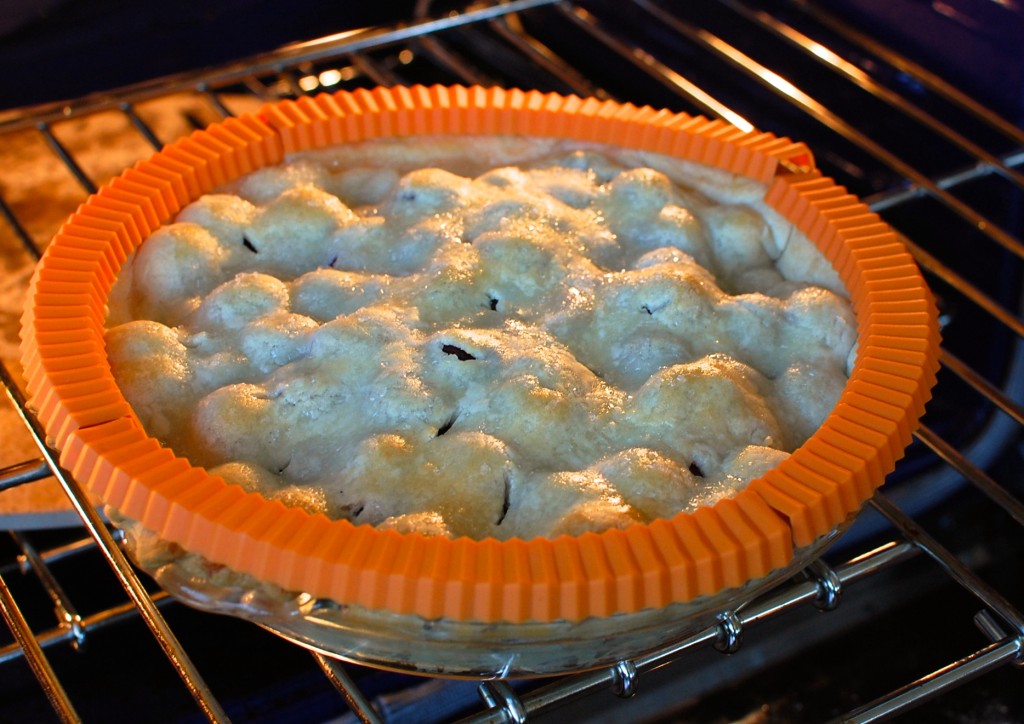
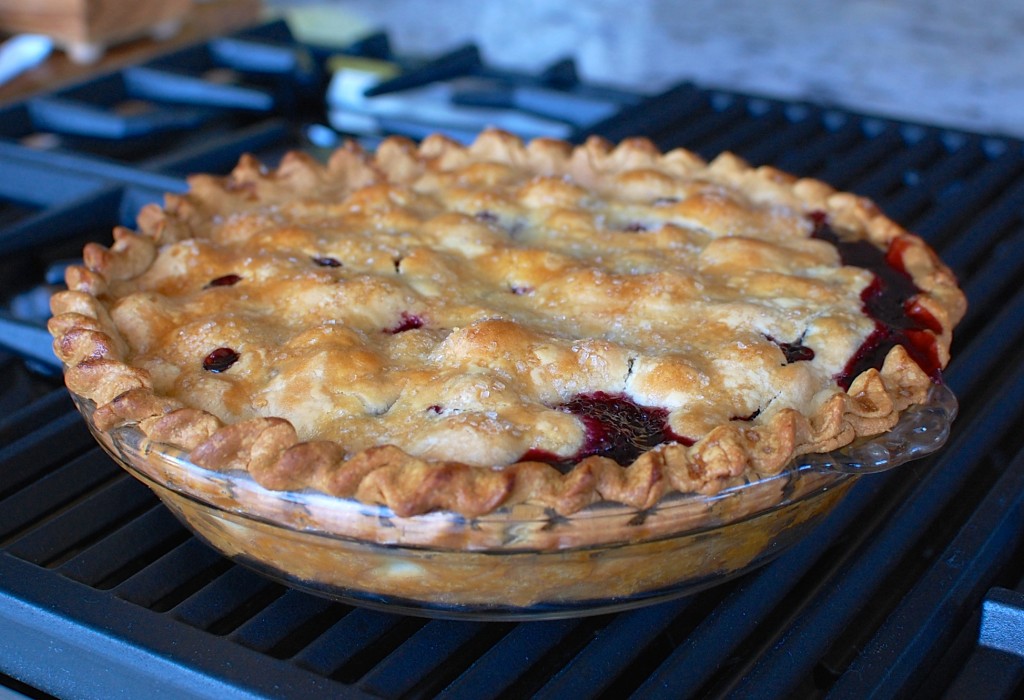


I tried making thecherry pie twice
The cherry filling is too liquidy
Fresh cherries can vary quite a bit in liquid content, so you may want to use 2 T. more tapioca starch next time, or you can try adding 2 T. cornstarch for really juicy cherries. Also, the pie sometimes needs to cool completely for the tapioca starch to finish the gelatinization process – usually several hours until room temperature. Rather than waiting (in anticipation) I find it easier just to make the pie the day before, refrigerate overnight, and then bring to room temperature before serving.